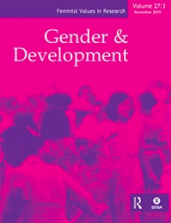Learning about women’s empowerment in the context of development projects: do the figures tell us enough?

Overview
In this article, we consider three projects implemented by Helvetas Swiss Intercooperation: a project in Nepal focusing on capacity building (vocational skills training); a project in Bangladesh focusing on income generation; and a project in Kosovo working on agency – enhancing the voice of citizens in local governance. The article examines how donor requirements for demonstrating evidence-based results challenge project management in different ways, how facts and figures are generated, how experience is translated into reports, and how qualitative methods are used for evaluations. This is compared against a stakeholder (participant) perspective of their degree of satisfaction with project performance, obtained through case studies or focus group discussions. We take the four dimensions of empowerment, notably ‘power-over’, ‘power-to’, ‘power-within’, and ‘power-with’, and consider the degree to which these are captured through qualitative and quantitative monitoring and evaluation systems. The main finding is that quantitative methods stress aspects of ‘power-to’, whilst qualitative methods have potential to provide insights into a broader range of outcomes and impacts.
This article is hosted by our co-publisher Taylor & Francis. For the full table of contents for this and previous issues of this journal, please visit the Gender and Development website.
Keywords
Additional details
How to cite this resource
Citation styles vary so we recommend you check what is appropriate for your context. You may choose to cite Oxfam resources as follows:
Author(s)/Editor(s). (Year of publication). Title and sub-title. Place of publication: name of publisher. DOI (where available). URL
Our FAQs page has some examples of this approach.

